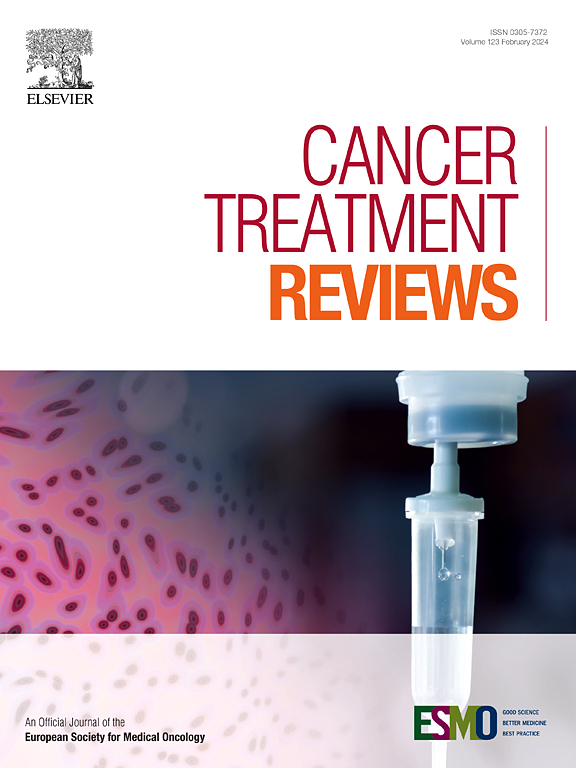Therapeutic advances in Tenosynovial giant cell Tumor: Targeting the CSF1/CSF1R axis
IF 9.6
1区 医学
Q1 ONCOLOGY
引用次数: 0
Abstract
Tenosynovial giant cell tumor is a non-malignant primary locally aggressive articular disease that affects the synovium of joints, tendon sheaths, and bursae. It is characterized by a translocation t (1;2), leading to the overexpression of CSF1 in the tumor microenvironment. CSF1 induces the recruitment of non-malignant cells, mainly macrophages, followed by the differentiation and polarization of these cells into the M2 phenotype. Surgery, particularly total synovectomy, remains the cornerstone of TGCT management. However, recurrence rates vary, reaching 40 to 60% in diffuse disease, often resulting in progressive joint dysfunction, pain, and potential need for joint replacement or limb amputation. Systemic therapy is recommended in recurrent TGCT in patients not amenable to additional surgery. Targeting the CSF1/CSF1R axis has successfully improved tumor responses and enhanced symptomatic function. In this review, we aim to explore contemporary paradigms in inoperable TGCT patients, with a focus on the physiopathology, clinical efficacy, and safety of CSF1 or CSF1R inhibitors.
腱鞘巨细胞瘤的治疗进展:靶向CSF1/CSF1R轴
腱鞘巨细胞瘤是一种非恶性的原发性局部侵袭性关节疾病,影响关节滑膜、肌腱鞘和滑囊。其特点是易位t(1;2),导致CSF1在肿瘤微环境中过表达。CSF1诱导非恶性细胞,主要是巨噬细胞的募集,然后这些细胞分化和极化为M2表型。手术,特别是全滑膜切除术,仍然是TGCT治疗的基石。然而,复发率各不相同,弥漫性疾病的复发率可达40%至60%,常导致进行性关节功能障碍,疼痛,并可能需要关节置换术或截肢。对于复发性TGCT患者,如果不能接受额外的手术,建议进行全身治疗。靶向CSF1/CSF1R轴已成功改善肿瘤反应并增强症状功能。在这篇综述中,我们的目的是探讨不能手术的TGCT患者的当代范例,重点是CSF1或CSF1R抑制剂的生理病理、临床疗效和安全性。
本文章由计算机程序翻译,如有差异,请以英文原文为准。
求助全文
约1分钟内获得全文
求助全文
来源期刊

Cancer treatment reviews
医学-肿瘤学
CiteScore
21.40
自引率
0.80%
发文量
109
审稿时长
13 days
期刊介绍:
Cancer Treatment Reviews
Journal Overview:
International journal focused on developments in cancer treatment research
Publishes state-of-the-art, authoritative reviews to keep clinicians and researchers informed
Regular Sections in Each Issue:
Comments on Controversy
Tumor Reviews
Anti-tumor Treatments
New Drugs
Complications of Treatment
General and Supportive Care
Laboratory/Clinic Interface
Submission and Editorial System:
Online submission and editorial system for Cancer Treatment Reviews
 求助内容:
求助内容: 应助结果提醒方式:
应助结果提醒方式:


